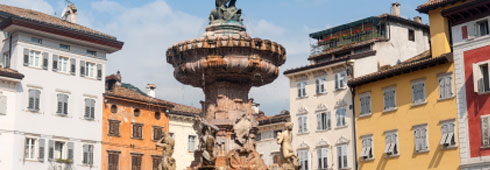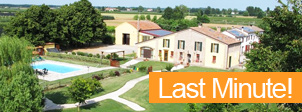Details:
 Trent and especially the region of Trentino are universally known as an ideal for mountain sports and skiing in particular.
Trent and especially the region of Trentino are universally known as an ideal for mountain sports and skiing in particular.
Trent is also a city to visit and this time is ideal to have a mild climate, not too hot and not too cold.
The name of Trent Roman origin, is believed to derive from the three hills (Mount or Verruca Doss Trent, Sant’Agata and San Rocco) that surround the city.
Other sources claim that the name derives from the ‘trifurcation’ of the bed of the Adige river which washes the city.
DO NOT MISS:
1 – The Cathedral of St. Virgil, or the dome
2 – The church of Santa Maria Maggiore
3 – Abbey of San Lorenzo
4 – Palace of Albere
5 – Thun Palace, seat of the Municipality
6 – Bishop’s Palace in Piazza Fiera di Trento
7 – Castle Buonconsiglio
8 – The Fort de Buss sailing Cadine
9 – Mausoleum of Cesare Battisti on the Doss Trento
10-MART, the Museum of Modern and Contemporary Art of Trento and Rovereto
ABOUT TRENTO:
Regarding its history the first human settlements in the territory of Trent back to prehistory, but only in Roman times it gives rise to real town center.
The Latin tradition it is particularly penetrated into the territory, so that the old hall still reads the Latin inscription ‘Montes argentum mihi dant nomenque Tridentum’ (the mountains give me the silver and the name of Trent), due to Fra Bartolomeo da Trento.
In the Augustan period the city’s role became more strategic so that the town grew and grew. It was developed by a quadrangular, bounded on one side by the river Adige, the other three sides by walls and ditches, with square towers and doors for access. Some of which can still be seen visiting the city.
The streets were developed in an orderly manner, in parallel plant of the thistle and decumanum accordance with the principles of Roman.
Era became the seat of a Lombard duchy and, in the Carolingian era, a marquis. Later, the emperors granted the area to the bishop of Trent, assumed the role of Prince-Bishop, creating a state that lasted until 1801.
The city from sec. XIII will be developed taking the urban characteristics that still retains.
From 1543 to 1563 is the seat of the Council of Trent by Pope Paul III Farnese. The council will make the city famous throughout the world today.
Throughout the nineteenth century was the subject of Trento transformations of major importance up to the town that we visit today.
The history of Trent is as interesting as its landscape and its beautiful mountain trails. Trento is also famous for its prestigiossa production of DOC wines, sparkling wines and grappa. E ‘in the middle of the most renowned wine regions of Trentino and in the surrounding valleys offer many routes between wineries and castles, huts and restaurants. Also famous apples in Trentino whose crops characterize the hills and mountains.
All that remains is to book a farm and visit!
Find your farmhouse near TRENTO>>>

Comments are closed.